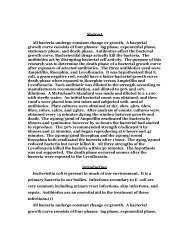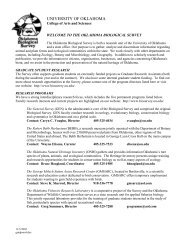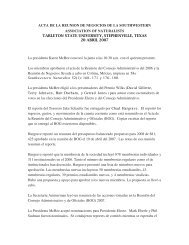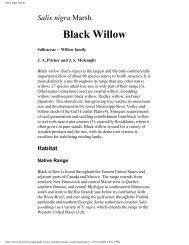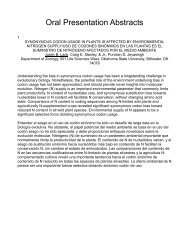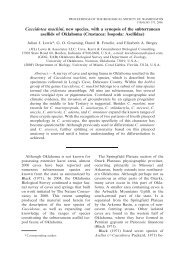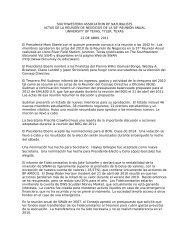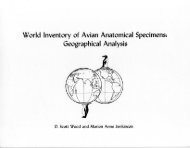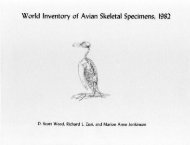Mary Masterman - Oklahoma Biological Survey - University of ...
Mary Masterman - Oklahoma Biological Survey - University of ...
Mary Masterman - Oklahoma Biological Survey - University of ...
Create successful ePaper yourself
Turn your PDF publications into a flip-book with our unique Google optimized e-Paper software.
Abstract<br />
2<br />
Previously a low-resolution, classical spectrograph with a resolution <strong>of</strong> about 700 and a spectral range <strong>of</strong> about 200 nm was<br />
constructed.<br />
A Raman system was built for the above spectrograph. It used a green 532 nm laser to stimulate Stokes scattering in samples.<br />
The laser beam was reflected <strong>of</strong>f a dichroic mirror at an angle <strong>of</strong> 90°. A microscope objective then focused the laser beam onto the<br />
sample and collimated the returning light. Light <strong>of</strong> the laser wavelength was filtered out by an interference filter that reduced the<br />
laser signal by approximately 10 5 . A 50 mm f.l. lens then focused the waveshifted light on the entrance slit <strong>of</strong> the spectrograph.<br />
Measured wavenumbers correlated well to those in published spectra. Difficulties included false spectral lines created by the<br />
multimode laser and fluorescence in many samples.<br />
A Littrow spectrograph was then constructed. A medium-format 200 mm lens was used as a combined collimation and camera<br />
lens. A body, utilizing a diagonal mirror, connected the lens with the camera. The modular design facilitated interchanging <strong>of</strong> the<br />
lens, camera, and grating holder with different models. An adjustable slit was created, with light entering through a standard SCTthread<br />
adapter. The spectrograph could be mounted directly to the Raman head or used in other applications, including astronomy.<br />
The F/4.8 spectrograph had a resolution <strong>of</strong> 6500 and a spectral range <strong>of</strong> 80 nm with a 1200 l/mm grating. The spectrograph was<br />
tested with a consumer DSLR camera as well as a cooled CCD camera.



